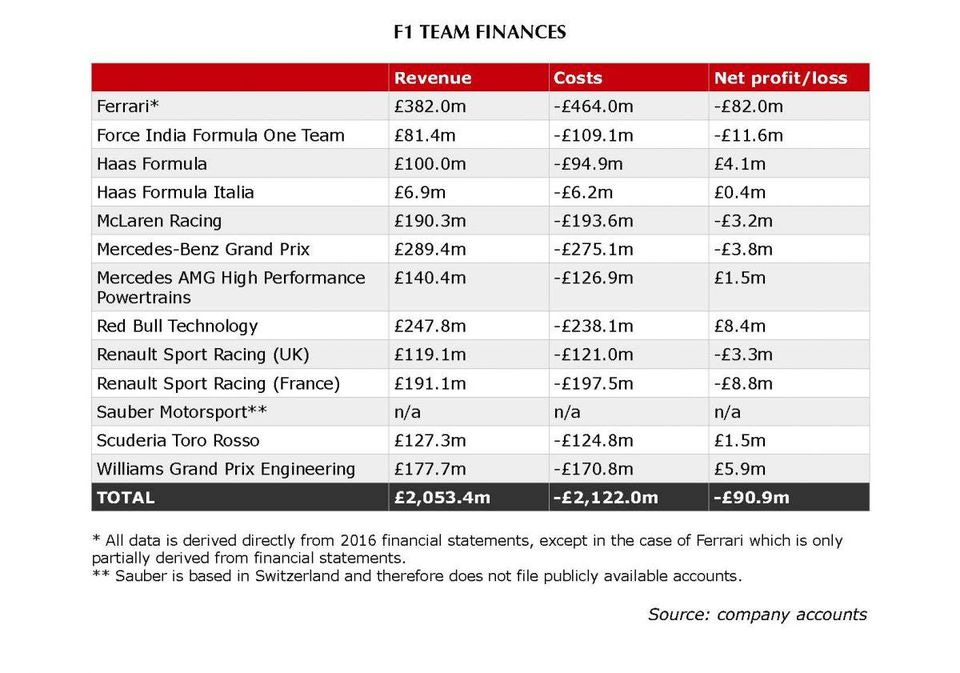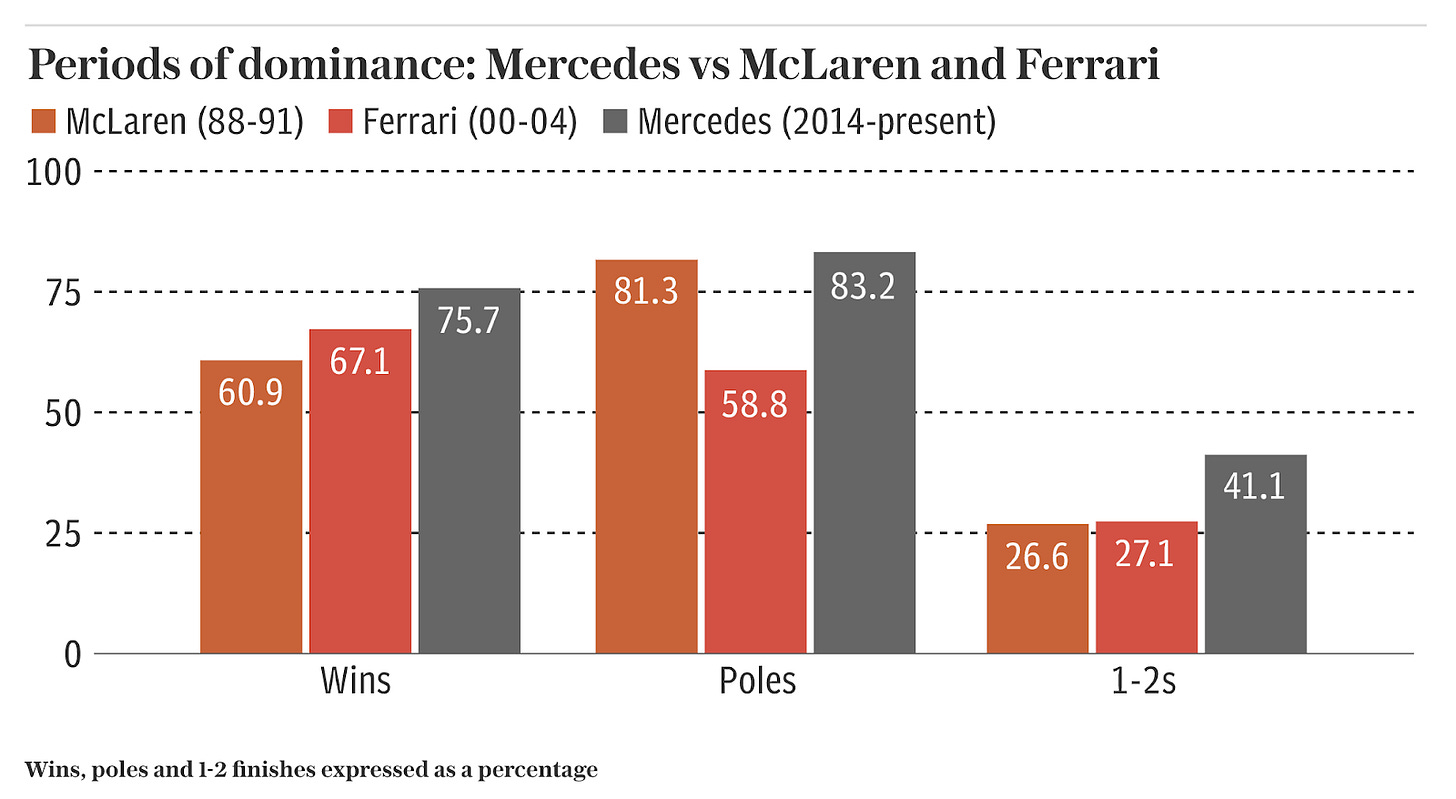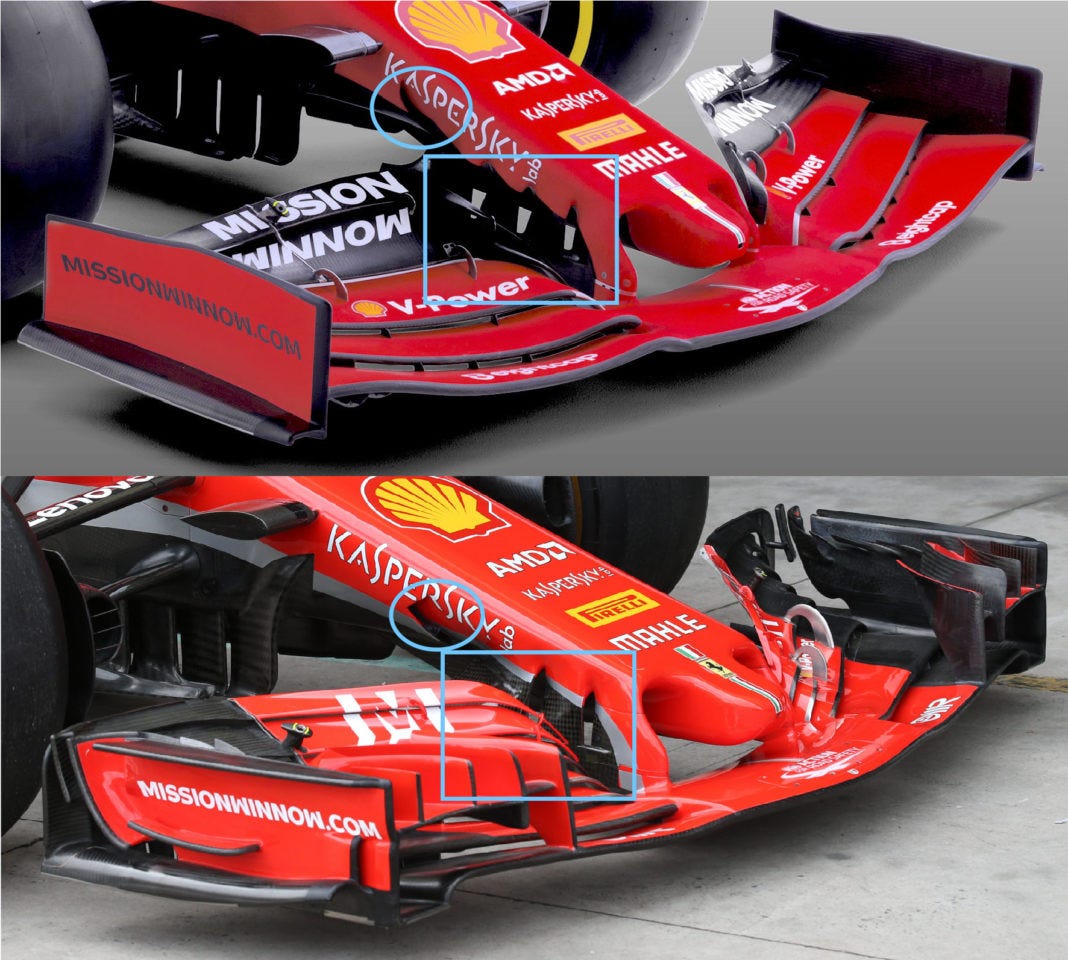Why is this interesting? - The Formula 1 Edition (Part One)
On Formula 1 racing, competitiveness, and aerodynamics
This is a little bit of an experiment, so bear with us. Part of the fun of this email is getting to try our best to explain topics we’ve recently gone deep on. For me that’s been Formula 1. I started writing this as a way to learn more about the aerodynamics of the sport and it quickly ballooned. Rather than cutting it down, we’re going to run it today and tomorrow as a two-parter (part two is now up). Hope you enjoy. - Noah (NRB)
Noah here. As I’ve mentioned in the past, after watching the Netflix Drive to Survive show about Formula 1 racing I’ve gone fully obsessed. I’ve long held that any sport is interesting once you dig into the details and strategy and that feels particularly true for F1, which is a unique combination of athletics, engineering, and economics. The top teams spend upwards of $300 million per year developing their cars down to the very finest aerodynamic detail. Per Forbes, “Tucked inside each car is around 1.25 kilometers of wiring and around 200 sensors, some of which give readings up to 1,000 times per second. The cars are at the forefront of technology so increased investment can drive developments which make a difference on track.”

The problem, as might not be a shock to anyone who has been paying attention to the world for the last two decades, is inequality. Things have gotten so top heavy that a new Formula 1.5 subreddit has gained popularity by pretending the sport’s three top teams of Mercedes, Ferrari, and Red Bull don’t exist. Since 2014, when new regulations forced all teams to adopt a hybrid engine, Mercedes has won every title. In fact, in that period they’ve won roughly 75% of all races, a mind-boggling number. While Lewis Hamilton, the Mercedes driver who has taken all but one of those championships, is surely a large part of their success, there’s little doubt that Mercedes’ ability to turn dollars into horsepower and aerodynamics is, at the very least, equally important.
Why is this interesting?
Dominance is not uncommon in Formula 1. As you can see in the chart below, McLaren and Ferrari both saw similar, albeit less impressive, winning periods in the sport. The “formula”, as the specifications of the cars is referred to, seems to allow teams who capture a power or aerodynamic innovation to hold onto that advantage for some time. As a newcomer to the sport I’ve been trying to unravel why that would be the case, as this sort of visible technological progress seems like something competitors should be able to catch up on. The truth is after lots of searching, I haven’t found anything approaching a conclusive answer. So far I’ve uncovered many parts science, a few parts art, and a whole bunch of secrets. And, of course, there’s a human element, though its a point of endless debate how big an advantage any individual can actually confer. The greatest drivers generally drove for the teams with the most dominant cars, making it incredibly difficult to unravel. Mercedes has been piloted by Lewis Hamilton through its run of greatness, McLaren’s championships came with two of the sports all-time greats—Senna and Prost—behind the wheel, and Ferrari was driven by Michael Schumacher during their early-2000s dominance.

One big piece of the competitive puzzle for the sport is that the aerodynamic advances these teams have made had the double effect of also making their competitors slower. The reason is that as the team finds new ways to reduce drag and create downforce (effectively the opposite of lift), they have to use a whole bunch of different techniques to maneuver air around the top and sides of the car (we’ll get to the bottom of the car in tomorrow’s edition). One of the tools for achieving this are tiny little winglets that show up everywhere they’re allowed on the car, helping to direct air and create vortices. Unfortunately, this also has the effect of pushing off a bunch of turbulent air to the sides and back of the car, which, in turn, makes the car following less effective, since everything is designed to work with a clean flow of air. That means it’s much harder to pass.
To help fix that the FIA (F1s governing body) introduced a drag reduction system (DRS) in 2011 that allowed a following car a significant aerodynamic advantage (around 5-10 mph extra speed) if they were in certain areas of the track and within 1 second of the car in front. Basically it was just a big flap that opened on the rear wing, reducing drag. While that helped with overtaking, it was little more than a band-aid, because now everyone just passes on a few areas of the track where they have the advantage. Left looking for more solutions, the rules changed again in 2019 to simplify the front wings (amongst other things) with the hope of reducing the outwash (the turbulent air sent to the sides of the car). Below you can see the difference in the complexity of the wings from 2018 (bottom) with tons of little winglets moving air all around to 2019 (top) with just five solid planes. This seems to have helped a bit, but delivered nothing close to a competitive series this year, with Mercedes finishing first and second in the opening five races of the season.

Source: Racecar Engineering
For tomorrow’s edition I’ll go into the regulations being introduced for 2021 and how the governing body hopes it will help fix some of what ails the sport. Stay tuned. (NRB)
Quick Links:
Drivers in the W Series, a female-only open wheel racing league that debuted this year, will start receiving “superlicense points” starting in 2020. That means they will be working towards qualifying for a chance at Formula 1, the top open wheel racing league in the world. There are currently no female drivers racing in F1. (NRB)
F1 drivers wear biometric gloves that measure heart rate and blood oxygen level. “The sensor is powered by a small battery that charges wirelessly and beams encrypted data up to 500 meters via Bluetooth.” (NRB)
If any of this is of interest and you want to dive much deeper, the biography of Adrian Newey, one of the most accomplished F1 car designers in history, was recently released. It’s titled with exactly the humility you’d expect out of someone in his position: How to Build a Car: The Autobiography of the World’s Greatest Formula 1 Designer. (NRB)
Thanks for reading,
Noah (NRB) & Colin (CJN)

